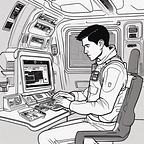Understanding U-Net: A Comprehensive Tutorial
Introduction
In the field of computer vision and image segmentation, U-Net has emerged as a powerful and widely used architecture. U-Net has proven to be highly effective for tasks such as image segmentation, where the goal is to classify each pixel in an image. This tutorial will provide a comprehensive overview of U-Net architecture, its components, and how to implement it for image segmentation tasks.
What is U-Net?
U-Net is a convolutional neural network (CNN) architecture designed for semantic segmentation tasks. Its name is derived from its U-shaped architecture, which consists of a contracting path (encoder) followed by an expansive path (decoder). This unique structure allows U-Net to capture context at different scales while maintaining spatial information.
Architecture Overview
- Contracting Path (Encoder)
- The encoder is responsible for capturing high-level features and reducing the spatial dimensions of the input image.
- It consists of repeated blocks of convolutional layers followed by max-pooling layers, effectively downsampling the input.
2. Bottleneck
- At the center of the U-Net is a bottleneck layer that captures the most critical features while maintaining spatial information.
3. Expansive Path (Decoder)
- The decoder is responsible for upsampling the low-resolution feature maps to match the original input size.
- It consists of repeated blocks of transposed convolutions (upsampling) followed by concatenation with corresponding feature maps from the contracting path.
Loss Function
U-Net typically uses a pixel-wise binary cross-entropy loss function, which measures the difference between the predicted segmentation mask and the ground truth mask for each pixel.
Implementation with TensorFlow
Let’s implement a simple U-Net model using TensorFlow and Keras. Make sure you have the required libraries installed.
import tensorflow as tf
from tensorflow.keras import layers, models
def unet_model(input_size=(256, 256, 3)):
inputs = tf.keras.Input(input_size)
# Encoder
conv1 = layers.Conv2D(64, 3, activation='relu', padding='same')(inputs)
conv1 = layers.Conv2D(64, 3, activation='relu', padding='same')(conv1)
pool1 = layers.MaxPooling2D(pool_size=(2, 2))(conv1)
# Bottleneck
conv2 = layers.Conv2D(128, 3, activation='relu', padding='same')(pool1)
conv2 = layers.Conv2D(128, 3, activation='relu', padding='same')(conv2)
# Decoder
up1 = layers.UpSampling2D(size=(2, 2))(conv2)
concat1 = layers.Concatenate(axis=-1)([conv1, up1])
conv3 = layers.Conv2D(64, 3, activation='relu', padding='same')(concat1)
conv3 = layers.Conv2D(64, 3, activation='relu', padding='same')(conv3)
# Output layer
outputs = layers.Conv2D(1, 1, activation='sigmoid')(conv3)
model = models.Model(inputs=inputs, outputs=outputs)
model.compile(optimizer='adam', loss='binary_crossentropy', metrics=['accuracy'])
return model
# Instantiate the model
model = unet_model()
model.summary()Conclusion
U-Net has proven to be a robust architecture for image segmentation tasks. This tutorial provided an overview of its architecture, components, and a simple implementation using TensorFlow and Keras.
